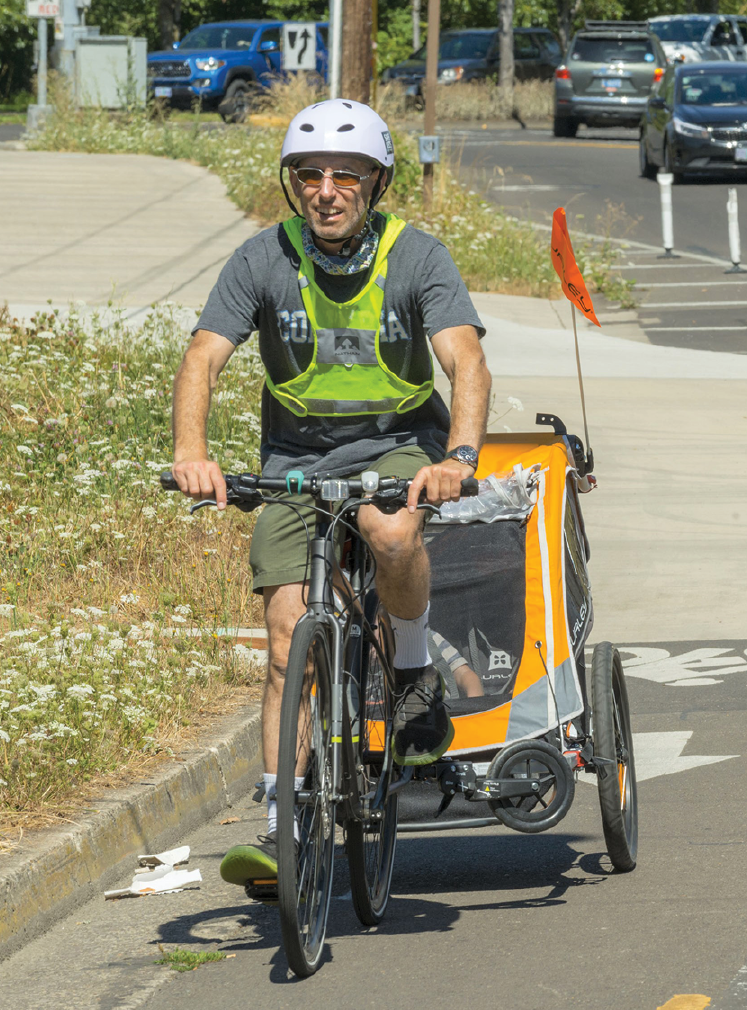Oregon law requires all bicycle riders under the age of sixteen to wear an approved helmet while riding on a public path or roadway. However, it is recommended that all people wear a helmet when riding bicycles to help prevent or lessen the severity of a potential head or brain injury. Even very careful riders can fall or be involved in a crash.
When you buy a new helmet look for the label or sticker indicating it meets the federal Consumer Product Safety Commission (CPSC) safety standard. Bicycle helmets that meet the CPSC standard will provide protection against head injury for their
useful life (usually 3-5 years) when used properly. Helmets should be handled and stored with care. Be sure not to drop it when
not in use. If you crash or fall, inspect your helmet; if there are signs of damage, replace it, because it may no longer protect you.
Lights are required by law when riding after dark. Just like a car must have headlights and taillights, you or your bicycle must have a white light on the front that is visible at least 500 feet away, and a red light or reflector visible at least 600 feet to the rear. Front white reflectors are not visible to motorists entering from a side street and do not meet legal lighting requirements. A red light on the back of your bicycle is more visible than reflectors.
Using these items in night and daylight hours, especially in overcast, rainy or foggy weather can help you be more visible. More
powerful lights will make you even more visible to others and help you to see road hazards, but should be pointed down slightly to
avoid blinding other riders. Keep extra batteries or a charger for longer rides.
Effectiveness of bike lights.
Additional Safety Equipment
You can also wear lights and reflective gear on your helmet, chest, back, arms, and legs. Wearing bright and light colored clothes like neon yellow and lime green can help make you more visible to other road users by keeping you from blending in with the roadway and surroundings that are usually dark.
 Wearing reflective gear.
Wearing reflective gear.
Bicycle bells can be a great communication tool. You can use your bell when passing people biking or walking. Slow down when passing so you don't startle people who may not be able to hear your bell. Most often, they will then expect you to pass them on the left.
Mirrors can help increase awareness of your surroundings. Use the mirror only as an aid – look over your shoulder to make sure adjacent lanes are clear before turning or changing lanes.
A sturdy bicycle lock will help keep your bicycle safe if you need to leave it unattended. You should securely lock your bicycle even
when leaving it for a very short amount of time. For the best security, use a U-lock, folding lock, or a heavy chain lock to secure
the triangle shaped part of the bicycle frame and front or back wheel to a bicycle rack. Cable locks can provide additional security
for quick release wheels and seats, but are easy to cut and less secure.
